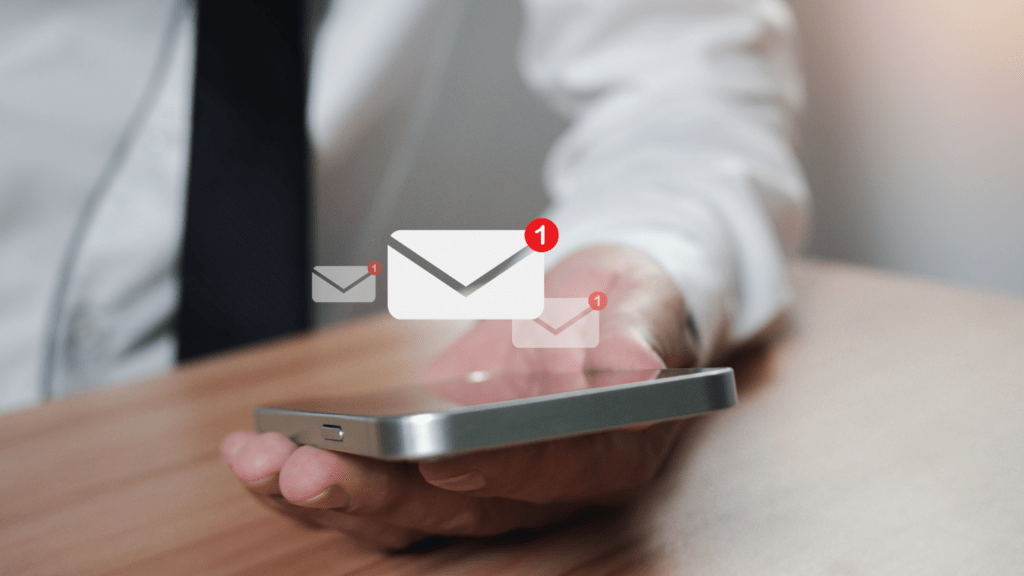Understanding the Importance of Email Marketing
Email marketing drives direct communication between businesses and potential customers. According to the Data & Marketing Association, email marketing can offer an ROI of up to $42 for every dollar spent. This emphasizes its cost-effectiveness for both large corporations and small businesses.
The personal touch in emails helps build strong customer relationships. Personalized emails have a 29% higher open rate and 41% higher click-through rate than non-personalized emails, as reported by Campaign Monitor. Tailored content ensures recipients feel valued and engaged.
Automated email campaigns save time and improve efficiency. Marketers can set up drip campaigns to nurture leads based on their behaviors. For example, sending a follow-up email one week after a customer shows interest in a product. Automation ensures consistent communication and timely engagement.
Email marketing data provides valuable insights. By analyzing open rates, click-through rates, and conversion rates, marketers can refine their strategies. For instance, A/B testing different subject lines can indicate what resonates most with the audience, leading to more effective campaigns.
To boost leads and foster customer loyalty, businesses should prioritize email marketing. Given its high ROI, personalization potential, automation capabilities, and data insights, it’s a crucial part of any marketing strategy.
Building a Quality Email List
Establishing a quality email list is crucial for effective email marketing. Focus on growing and maintaining your list to ensure a high engagement rate.
Strategies for Growing Your List
New strategies enhance the process of list building significantly.
- Use Lead Magnets: Offer value propositions (free eBooks, whitepapers) in exchange for email addresses.
- Optimize Sign-Up Forms: Simplify the form (name, email) and ensure it’s mobile-friendly.
- Leverage Social Media: Promote email sign-ups (exclusive offers, content) on social platforms.
- Host Webinars: Encourage participants to join your mailing list for more content.
- Run Contests and Giveaways: Capture emails through entry forms, rewarding participants with prizes.
Maintaining Your Email List
Once you have a list, keep it clean and engaged.
- Regularly Clean Your List: Remove inactive subscribers (haven’t engaged in 6 months) to improve deliverability.
- Segment Your Audience: Create segments (demographics, behavior) to tailor content to specific groups.
- Send Re-engagement Campaigns: Target inactive subscribers (special offers, feedback requests) to regain interest.
- Ask for Preferences: Allow subscribers to select preferences (email frequency, content type) for better engagement.
- Monitor Feedback: Track metrics (open rates, click-through rates) and adjust strategies accordingly.
By focusing on these essential strategies, you can build and maintain a high-quality email list, ensuring dynamic and productive email marketing campaigns.
Crafting Compelling Email Content

Creating compelling email content is crucial for engaging your audience and boosting your leads. Let’s explore some key components of effective email content.
Subject Lines That Get Opened
A strong subject line is essential for grabbing attention. To achieve high open rates, keep subject lines short and include relevant keywords. Personalized subject lines can significantly increase open rates. For example, using the recipient’s name or referencing a recent interaction adds a personal touch. Avoid spammy phrases, which can trigger filters and reduce deliverability. A/B test different subject lines to identify which resonates best with your audience.
Engaging Body Text
The email body text should be concise and focused. Break up the text with short paragraphs, bullet points, and visuals to keep readers engaged. Personalization extends beyond the subject line. Use data like past purchases or browsing history to tailor content. Address pain points directly and offer solutions. For instance, if subscribers struggle with time management, provide tips or tools to help. Include a mix of informative and promotional content to maintain balance.
Effective Call to Actions (CTAs)
CTAs drive the intended action, whether it’s making a purchase, signing up for a webinar, or downloading a resource. Ensure CTAs are clear, concise, and visually distinct. Use action-oriented language like “Download Now” or “Get Started.” Position CTAs prominently within the email, ideally above the fold. Multiple CTAs can be included, but one primary action should be emphasized to avoid confusion. A/B testing different CTA placements and wordings can help optimize conversion rates. Persistent monitoring and tweaking based on performance are essential to ensure effectiveness.
Personalization and Segmentation
Personalization and segmentation are key strategies in effective email marketing. They enable more relevant and engaging content, leading to higher open and click-through rates.
Benefits of Personalization
Personalization increases engagement by addressing subscribers’ unique needs. Personalized emails generate a 29% higher open rate and a 41% higher click-through rate. For instance, using the recipient’s name in the subject line creates a sense of familiarity and ensures the email stands out in their inbox. Behavioral triggers, like sending product recommendations based on past purchases, also enhance relevance and drive conversions.
Effective Segmentation Techniques
Segmentation involves dividing the email list into smaller groups based on specific criteria. Demographic segmentation includes factors like age, gender, and location. This allows tailoring content to resonate with each subgroup. Behavioral segmentation considers actions like past purchases, email engagement, and browsing history. For example, sending a follow-up email to users who clicked a product link but didn’t purchase can encourage them to complete the transaction. Psychographic segmentation focuses on interests and lifestyles, allowing for more personalized content based on subscriber preferences.
Automation Tools and Strategies
Automation tools and strategies can significantly improve the efficiency of your email marketing efforts, saving time and increasing engagement.
Choosing the Right Tools
Selecting the right email automation tools is crucial for optimizing your campaigns. Look for these features:
- Integration capabilities: Ensure the tool integrates seamlessly with your CRM, social media platforms, and other marketing tools.
- User-friendly interface: Opt for tools with intuitive dashboards and drag-and-drop builders for ease of use.
- Personalization options: Select tools that support advanced segmentation and personalized content.
- Analytics and reporting: Choose tools that provide detailed insights into open rates, click-through rates, and conversion metrics.
For example, tools like Mailchimp, HubSpot, and ActiveCampaign offer robust automation features, enabling you to streamline your email marketing processes.
Implementing Automation Workflows
Implementing effective automation workflows can enhance your email marketing by delivering timely and relevant messages. Consider these strategies:
- Welcome sequences: Set up automated email sequences to welcome new subscribers, introduce your brand, and offer initial value.
- Abandoned cart reminders: Use automated emails to remind customers of items left in their carts, encouraging them to complete the purchase.
- Re-engagement campaigns: Target inactive subscribers with automated emails to reignite their interest and keep your list clean.
- Drip campaigns: Send a series of emails over a specific period to nurture leads through the sales funnel.
Integration of these workflows will help maintain consistent communication and boost engagement. For instance, a well-timed abandoned cart email could include a discount code, incentivizing customers to complete their purchase.
Measuring and Optimizing Your Campaigns
Regularly measuring and fine-tuning your email campaigns is essential for maximizing results. I ensure that my campaigns are effective by tracking key metrics and conducting thorough A/B testing.
Key Metrics to Track
Tracking critical performance indicators helps gauge the success of email campaigns. Here are the metrics I focus on:
- Open Rate: Measures the percentage of recipients who open the email.
- Click-Through Rate: Indicates the percentage of recipients who clicked on links within the email.
- Conversion Rate: Tracks the percentage of recipients who completed a desired action, such as making a purchase or signing up for a webinar.
- Bounce Rate: Measures the percentage of emails that could not be delivered to the recipient’s inbox.
- Unsubscribe Rate: Indicates how many recipients opted out of receiving future emails.
Tips for A/B Testing
A/B testing allows me to experiment with different email elements to determine what resonates best with my audience. Here’s my approach:
- Test Subject Lines: Experiment with different subject lines to see which one yields higher open rates. For instance, try personalized vs. non-personalized subject lines.
- Compare Send Times: Test various sending times to identify when your audience is most likely to engage. Compare weekday vs. weekend send times.
- Evaluate Email Content: Test different versions of email content to determine which layout or message gets more clicks. Alternate between long-form and short-form content.
- Analyze CTA Performance: Use different call-to-actions (CTAs) to see which prompts more conversions. Test between different phrasing or button colors.
- Segment Testing: Try segmenting your audience into smaller groups to see how different demographics respond. Test age group vs. interest-based segmentation.
These techniques provide actionable insights, enabling continual optimization and increased effectiveness of email campaigns.



